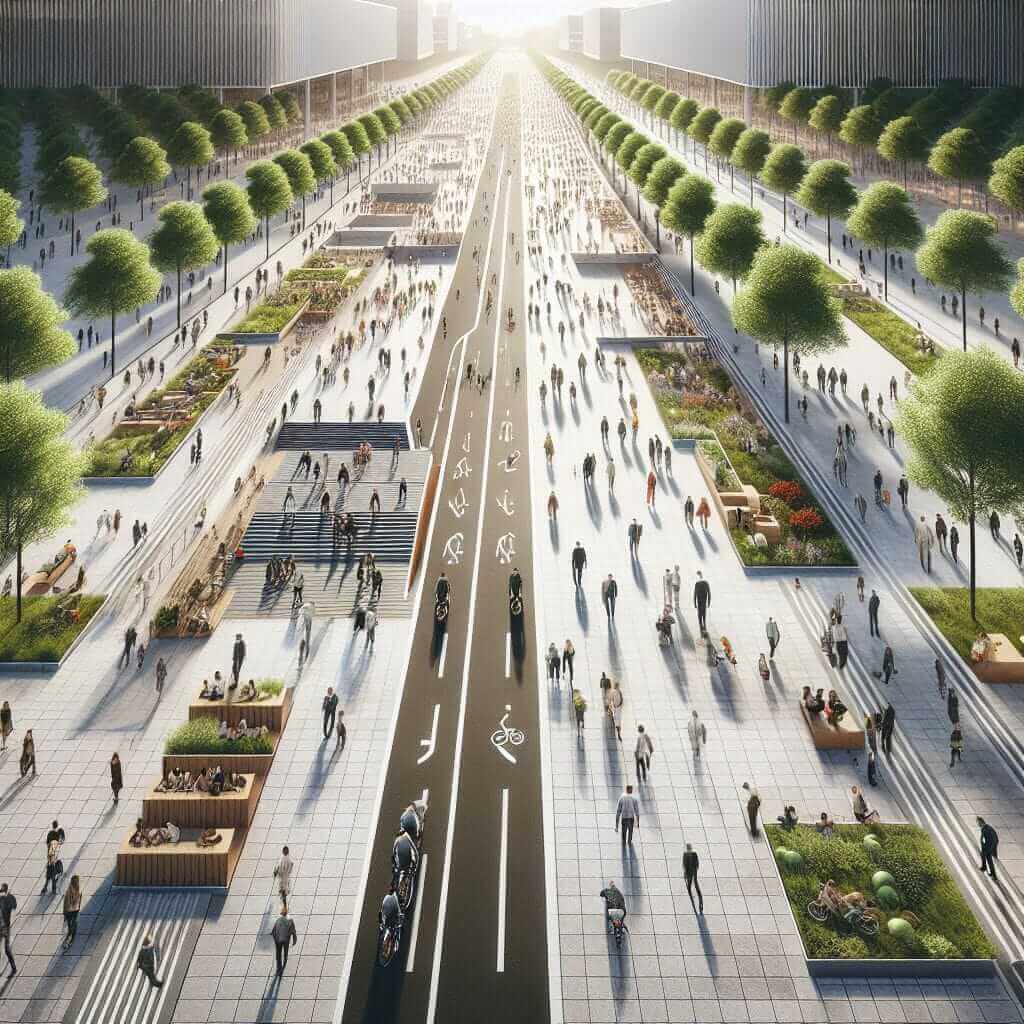The IELTS Reading section can be a challenging aspect of the exam, requiring not only strong reading skills but also an adept understanding of English. One of the compelling topics that have surfaced in recent times is the influence of social distancing measures on urban planning. This topic is not only timely but also relevant, providing an excellent opportunity for practice.
In this article, we will present a comprehensive IELTS Reading passage on the impacts of social distancing on urban planning. The article will include a full-length reading passage, questions tailored to the IELTS format, and detailed answer keys to help you refine your reading skills. We will also explore potential vocabulary, grammar, and common pitfalls, providing you with invaluable insights to tackle this type of reading passage in the actual exam.
Reading Passage and Questions
Reading Passage
Title: The Impacts of Social Distancing on Urban Planning
The COVID-19 pandemic has precipitated significant changes in various aspects of life, including travel, work, and social interactions. Among these changes, social distancing has emerged as a critical public health measure. The necessity to maintain physical distance from others has consequentially influenced urban planning practices.
One of the primary impacts of social distancing on urban planning is the redesign of public spaces. Parks, plazas, and even streets are being reimagined to accommodate social distancing norms. Urban planners are creating wider walkways, more open spaces, and dedicated lanes for cyclists. This reconfiguration aims to ensure that people can move safely and maintain the recommended distance of six feet from others. Such changes have been observed in cities like New York and Paris, where efforts to make the urban environment healthier and more resilient have gained momentum.

Moreover, the pandemic has accelerated the adoption of smart city technologies. Contactless technologies, such as sensors and automated systems, are being integrated into public infrastructure to reduce physical interaction and prevent virus transmission. For example, touchless entry systems for buildings and automated public transportation services are becoming more prevalent. These innovations not only help in mitigating the spread of viruses but also enhance the efficiency and convenience of city living.
In addition to technological advancements, urban planners are also focusing on the importance of green spaces. The pandemic has underscored the need for access to nature and outdoor areas where people can safely exercise and relax. Consequently, cities are investing in the development and maintenance of parks and recreational areas. Urban green spaces are seen as essential for public health, providing mental and physical benefits to residents.
Another significant impact is the reconsideration of housing designs. The pandemic has highlighted the inadequacies of current housing structures in promoting health and well-being. As a result, there is a growing emphasis on designing homes that include features such as home offices, larger balconies, and better ventilation systems. Residential areas are being planned to include amenities that reduce the need for travel, such as local shops and services within walking distance.
Overall, the impacts of social distancing on urban planning are profound and multifaceted. These changes reflect a shift towards creating urban environments that are more adaptable, sustainable, and conducive to the well-being of their inhabitants.
Questions
Multiple Choice
-
What is one primary focus for urban planners due to social distancing measures?
a. Reducing the number of parks
b. Creating wider walkways
c. Building more skyscrapers
d. Installing more traffic lights -
How have smart city technologies been integrated due to the pandemic?
a. By decreasing the use of sensors
b. Through touchless entry systems
c. By increasing manual public transportation
d. Through the reduction of automated systems
True/False/Not Given
- Social distancing measures have led to a reduction in urban green spaces.
- Smart city technologies have enhanced convenience in urban living.
- Urban planners are now excluding local shops from residential areas.
Matching Information
Match each statement to the correct section (A, B, C, or D) of the passage:
6. Redesign of public spaces to accommodate social distancing norms.
7. Integration of contactless technologies in urban infrastructure.
8. Development of housing designs to include home offices.
Sentence Completion
- Cities are __ to ensure residents can safely exercise and relax.
- Touchless entry systems help in __ virus transmission.
Answer Key
Multiple Choice
- b. Creating wider walkways
- b. Through touchless entry systems
True/False/Not Given
- False
- True
- False
Matching Information
- A
- B
- D
Sentence Completion
- investing in the development and maintenance of parks
- mitigating the spread of
Common Pitfalls
In tackling this type of reading passage, students often misinterpret keywords or fail to match information accurately. Practice distinguishing between significant and irrelevant details to avoid this. Time management is also crucial. Allocate time efficiently to ensure you can answer all questions.
Vocabulary
- Resilient (adj) – /rɪˈzɪliənt/ – Capable of withstanding shocks, quickly recovering.
- Precipitate (v) – /prɪˈsɪpɪteɪt/ – To cause something to happen suddenly or unexpectedly.
- Mitigating (v) – /ˈmɪtɪɡeɪtɪŋ/ – Making something less severe or harmful.
Grammar Points
-
Passive Voice
- Usage: “Urban spaces are being reimagined to accommodate social distancing norms.”
- Structure: Subject + is/are + being + past participle
-
Present Perfect Continuous
- Usage: “The pandemic has highlighted the inadequacies of current housing structures.”
- Structure: Subject + has/have + been + present participle
Conclusion
Understanding the impacts of social distancing on urban planning offers a multifaceted view of how urban environments are adapting to new health norms. Consistent practice with topics like these improves comprehension skills and equips you better for the IELTS Reading exam. Remember, effective preparation and familiarity with a variety of topics are key to achieving a high score in the Reading section.